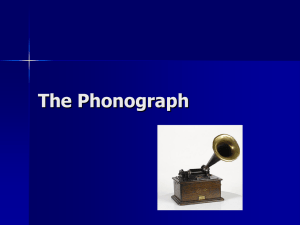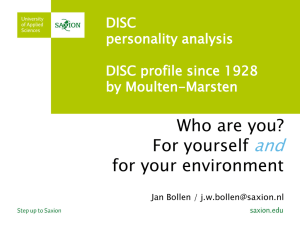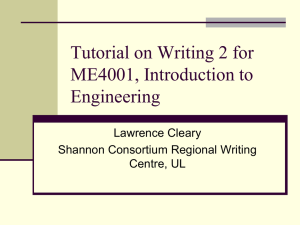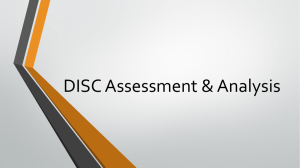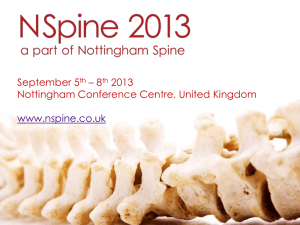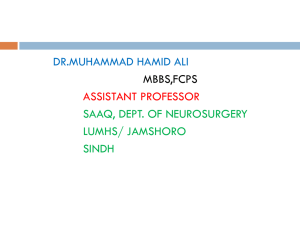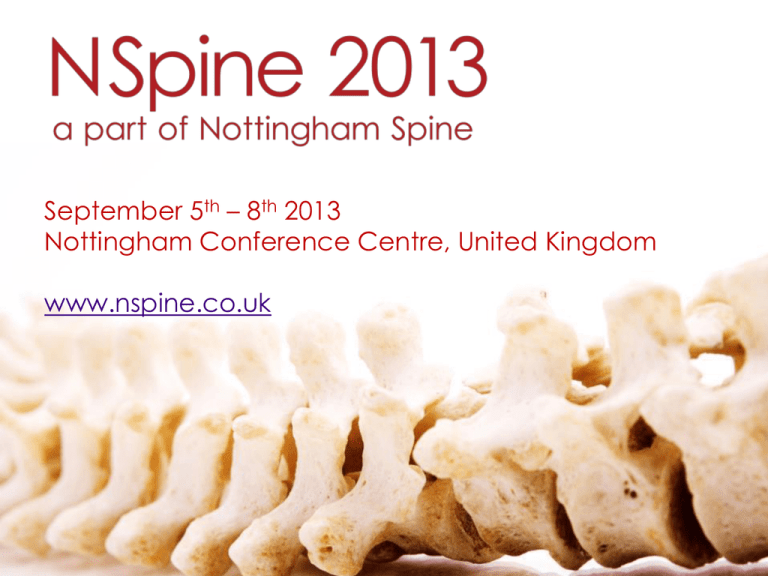
September 5th – 8th 2013
Nottingham Conference Centre, United Kingdom
www.nspine.co.uk
Disc Disorders
Traumatic disc herniation can occur.
Disc herniation can also occur secondary to degenerative
disc disease.
A herniated nucleus pulposus is most common in those
aged <40yrs, whilst degeneration of discs tends to affect
those aged >40yrs, with the prevalence increasing with
advancing age.
Disc lesions of Lsp>Csp>Tsp(rare).
Possible link with spinal curves, load bearing structures
and segmental mobility.
Disc Disorders
Herniated disc
Radicular pain
Degenerative disc
Axial pain
Discitis
Severe back pain
Degenerative Disc Disease
Discs dry out, losing flexibility & shock absorption.
Annular tears, internal disc disruption & resorption,
disc space narrowing, disc fibrosis & osteophyte
formation can all occur.
Exact cause is not known – may be a natural part of
ageing, but can occur in young people.
Cause is likely to be multifactorial – genetic,
environmental, traumatic, inflammatory, infection.
Degenerative disc disease may lead to disc herniation.
Disc Herniation Presentation
Isolated back pain which may radiate in a dermatomal
pattern.
Muscle spasm & change in posture.
Pain exacerbated by coughing, sneezing or twisting.
May present with myelopathy sensory disturbances
e.g. numbness below level of compression, difficulty
with balance & walking, lower extremity weakness, or
bowel or bladder dysfunction.
Thoracic Disc Herniation
Often no symptoms!
May be pain, paraesthesia or dysaesthesia in a
dermatomal distribution.
Herniation of T2-T5 with cord compression can mimic
cervical disc disease.
Thoracoabdominal sensory examination can help
determine the level of lesion: nipple is innervated by
T4, xiphoid by T7, umbilicus by T10 and inguinal
region by T12.
Testing abdominal and cremasteric reflexes can help
identify myelopathy & cord compression.
Lumbosacral Disc Herniation
Nerve root compression causes numbness, paraesthesia,
weakness &/or loss of tendon reflexes in 1 nerve root
distribution.
Unilateral leg pain that radiates below knee to foot.
Leg pain is worse than back pain.
Positive SLRT/slump
Large herniations can compress the cauda equina saddle
anaesthesia, urinary retention, faecal incontinence,
unexpected laxity of anal sphincter, severe/progressive
neurological deficit in LEX.
Diagnosis
Scans are important in identifying pathology, but are not as
meaningful in determining the cause of pain as a patients
specific symptoms and the results of a physical
examination.
Many people over age of 30 will have some level of a disc
problem, but few will have pain associated with it.
Physical examination findings and symptoms need to
match the MRI/test findings to arrive at an accurate
medical diagnosis, and thereby formulate an effective
treatment plan.
MRI can help identify constituents of bulge and therefore
inform prognosis
Treatment Strategy
Acute – highly inflamed : Foraminal gapping
techniques to reduce load on disc and encourage fluid
exchange around area. Reduce muscle spasm.
Chronic : Treat above and below affected level, as well
as the affected level specifically. Encourage better
global functioning in order to reduce the load at the
chronic disc level and to prevent recurrence. Bulge is
much more ‘incidental’ than in acute setting.
Treatment Considerations
Disc may not be causing pain per se, but altered spinal
mechanics influence the level of pain.
Key junctional areas – SIJ, L/S, T/L & C/T are commonly
affected mechanically with degenerative Lsp disc disease.
In treating the widespread segmental restrictions, the
degenerate discs are the levels that are really stubborn to
clear.
Multi-level (4 or 5) disc problems can take a long time to
change – high failure rate.
More reactive to treatment, & commonly take longer to
recover from treatment – necessitates good
communication & adherence to treatment plan.
Case Presentation
Pt:
M, 77yrs
Presentation:
5 month history of low back pain following a
fall
PMH:
AAA.
L1 nerve root block.
Diagnosis:
Degenerate Lsp. L1/2 disc herniation
compromising L1 nerve root on left.
Osteopathic
Evaluation:
L3-SIJ restrictions in flexion. L3/4 restriction in
extension.
TTT given:
Articulation of Lsp & SIJ - avoiding prone
positioning & long lever extensions.
Mobilisation of hips & stretching
hamstrings & gluteals.
Pre TTT ODI:
70%
Post TTT ODI: 20%
Case Presentation
Pt:
M, 53yrs
Presentation:
Axial low back pain & bilateral LEX pain, >3yrs.
Unable to walk more than 30-40yds before pain made
him stop.
PMH:
Extensive physio, pain management, Gabapentin,
Pregabalin, Caudal epidural & bilateral L5 root block
(x2).
Diagnosis:
Degenerative L4/5 disc disease with foraminal
stenosis. Surgical plan: L4/5 decompression.
Osteopathic
Evaluation:
Restricted flexion left L5 & SIJ.
Restricted extension L1-4.
TTT given:
Articulation of Lsp & L/S junction.
Soft tissue stretching through hips and LEX.
Encouraged extension through Lsp.
Pre TTT ODI:
40%
Post TTT ODI:
8%
Able to walk >40 minutes and has returned to normal
activity levels.
Case Presentation
Pt:
M, 42yrs
Presentation:
Chronic neck & low back pain (4-5yrs).
LBP radiating to right leg.
PMH:
Physio. Pain management (analgesia,
Gabapentin).
Diagnosis:
Multi level disc degeneration in Csp & Lsp,
with foraminal stenosis at C6/7 & L4/5.
Osteopathic
Evaluation:
Flexion & extension restrictions at T9-SIJ &
C1-T5 left.
TTT given:
Articulation of Csp, Tsp & Lsp. Mobilistaion of
hips and stretching of LEX soft tissues.
Pre TTT ODI:
Pre TTT NDI:
60%
66%
Post TTT ODI: 8%
Post TT NDI:
11%
Patient resumed full employment.






